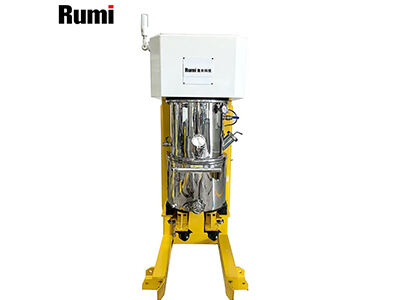These Shanghai Rumi Electromechanical Technology Co., Ltd. mixers are needed by the pharmaceutical and electronics industries because they feature high viscosity. Such mixers are meant to work on pastes and mixtures that require high power to stir correctly. Even so, there are certain problems associated with using these mixers and we will cover some of the typical mistakes and how to resist them next. Here, we’ll explain issues surrounding the effects of overloading and of temperature changes.
Overloading Pitfalls: Viscosity Limits for Silicone Rubbers vs. Pharmaceutical Gels
Many users often commit the mistake of overloading their high viscosity mixers. As a result, machines might be damaged, mixtures might not be perfect and safety risks may appear. Also, if the mixer is used for much more or viscous material than it was made for, it is experiencing overloading.
It is important to be aware of a material’s limits of viscosity with silicone rubbers and pharmaceutical gels. A mixer may struggle with silicone rubbers since their high viscosity is not found in pharmaceutical gels. Health-related gels are not as thick as silicone rubbers and so their mixing requires fewer intense and expensive equipment tools.
It is important to follow the manufacturer’s advice on the max load and the oil viscosity the mixer is capable of working with. Remember to watch for any difficulties the mixer’s motor has such as loud or strange noises; these can indicate that the mixer is being overworked. Properly looking after the equipment and arranging routine checks makes sure it is strong enough to support your needs.
Temperature Control Failures: Preventing Premature Curing in Epoxy Resin Mixing
It is very important to control the temperature when mixing materials that are viscous or sensitive to temperature, including epoxy resins. If the temperature is managed incorrectly, the mixture might cure too soon and be unusable which results in valuable materials being wasted.
Epoxy resins are likely to be affected by changes in temperature. If the temperature goes up, their curing process happens faster. A warm mixer or an environment or friction, may cause the mixture to cure too soon despite proper mixing. Such practices can ruin the product and possible damage the mixer due to the curing happening inside the mixing equipment.
Climate control the environment where mixing is done and keep watch over the temperature of both the mixer and the ingredients to keep temperature-related failures at bay. It is especially helpful to use mixers that monitor temperature, because you can see the changes as they happen and respond appropriately. Step one, bring the materials to the correct temperature prior to the mixing for better temperature control. Wider mix times help ease the equipment’s workload and usually increase the quality of the complementary.
Conclusion
One must be aware of the equipment and substances used to properly mix with high viscosity mixers. If you avoid filling the machine too much and do not ignore temperature control, your mixes will be more effective and result in great-quality products. Stick to the manufacturer’s recommendations and always consider what each material needs while you work. To maintain your equipment well and preserve it for a long time, it is important to perform maintenance and checks regularly.
You can enjoy higher quality and greater efficiency in your mixing, as well as protect your expenses on resources and equipment. It is important to have expertise, be focused and carefully manage any problems while mixing in high viscosity materials.
 EN
EN
 AR
AR
 BG
BG
 HR
HR
 CS
CS
 DA
DA
 NL
NL
 FI
FI
 FR
FR
 DE
DE
 EL
EL
 IT
IT
 JA
JA
 KO
KO
 NO
NO
 PL
PL
 PT
PT
 RO
RO
 RU
RU
 ES
ES
 SV
SV
 TL
TL
 ID
ID
 LT
LT
 SR
SR
 SK
SK
 SL
SL
 VI
VI
 HU
HU
 TH
TH
 TR
TR
 FA
FA
 MS
MS
 BE
BE
 IS
IS
 AZ
AZ
 BN
BN
 EO
EO
 LA
LA
 MN
MN



